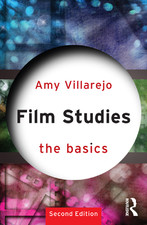Hit Me With Your Best Shot: Dead Ringers
 Even in my most productive weeks, in ten of my most productive weeks, I cannot compete with Nathaniel R's indefatigable productivity. If you know Nathaniel, you know he is always fretting that his site traffic will collapse, or seeking ways to give his readers more more more. He is so extraordinarily generous, it makes me tired just thinking about it, which is why you should donate.
Even in my most productive weeks, in ten of my most productive weeks, I cannot compete with Nathaniel R's indefatigable productivity. If you know Nathaniel, you know he is always fretting that his site traffic will collapse, or seeking ways to give his readers more more more. He is so extraordinarily generous, it makes me tired just thinking about it, which is why you should donate.Most recently, he has been laboring even harder than I have to make sure you know about my new book, The Desiring-Image: Gilles Deleuze and Contemporary Queer Cinema, which I started working on within a year of meeting Nathaniel in 2002. Already he published this interview I got to do with top-flight film critic Tim Brayton about the book's ideas, its contexts, and what I hope people might get from it (which was a joy to do). Today he is hosting a new installment of his delicious Hit Me With Your Best Shot series that is also designed to plug the book by showcasing the subject of its first chapter, David Cronenberg's Dead Ringers, an eerie film noir in crimson and blue, chrome and rue, starring two twin brothers as each other's homme fatal.
I'm delighted to see what his other contributors select as their favorite shot in this deliriously gorgeous movie, shot by Peter Suschitzky, the same cinematographer who lends chic, subtle macabre to all of Cronenberg's pictures. Suschitzky also gave us the fluorescent slash of light sabers in The Empire Strikes Back, the farcical flatness of Mars Attacks!, and the scary, rock-and-roll martyrology of Peter Watkins' Privilege, a clear and underseen precursor to the film that closes my book, Todd Haynes's Velvet Goldmine. I suppose I'm being predictable by picking a shot that already illustrates my chapter on Dead Ringers. But since photo captions in academic books typically keep to a bare minimum, I thought I'd say a little more about why I selected it, and what I find more generally artful about the shot, and why I relish as gruesome and disquieting a film as Dead Ringers, and what you might hear if you dip into conversation with The Desiring-Image.

These are the gynecological tools that Beverly Mantle designs for operating on "mutant women." They wheel into this shot from just out of frame, staggering the eye with their horrid shapes while flattering it with their texture and detail, and with the precise, elegant framing Suschitzky achieves even from this spontaneously-arriving element. The plot logic behind these implements is even more revolting than their fanged, spindly appearance: at this point the drugged-up and heartbroken Beverly believes that all women's bodies exist in a state of grievous mutation, which only he can assess and emend, using these devices. Soon enough, we will learn that Beverly perceives himself and his own twin brother to be mutants, and will "operate" on Elliot accordingly. No points for guessing that this goes badly. Cyril and Stewart Marcus, the New York gynecologists whose true story inspired Dead Ringers, did not in fact smelt such alien technologies, though they did die together under mysterious circumstances, and one of them did leap atop a female surgery patient in a narcotic haze to huff her anesthesia, as Beverly does soon enough in this scene. If you want to know more about the Marcuses, read the "Dead Ringers" chapter of this book, and feel bad for Rosenbaum that he gets no credit of any kind in Cronenberg's film.
My book is about queer cinema from the late 1980s to the present, and its biggest goal is to define that rubric so that it doesn't only or even primarily equate to "gay and lesbian film." Instead, I want the phrase to suggest an expansive, debatable, fluctuating range of movies that use story, style, and structure to throw their audiences out of easy assumptions about what any desire is, how it works, who feels it, via what promptings, how abruptly it might shapeshift, and how cinema helps create it. I wrote two chapters on Cronenberg because he's more or less our poet laureate of shape-shifting bodies and weird sexualities, though Dead Ringers marked something new for him in the wake of Rabid, Scanners, The Fly, and their ilk: rather than douse us in the plasma and viscera of bodily change, Dead Ringers uses uncanny atmospherics, brooding performances, and objects like these tools to imply total overhauls in desire and embodiment. As the best horror movies know, and some of the most erotic movies do as well, what we imagine for ourselves is often scarier and sexier than images can show us. Beverly's tools are unnerving, then, because they force you to conceive of the body they would fit: an ingenious cinematic trick, though not one that every viewer will want to try at home.
Read more »
Labels: Academia, Blog Buddies, David Cronenberg, Dead Ringers, Desiring-Image, Hit Me With Your Best Shot, Nick in Print, Queer Cinema
 Nick's Flick Picks: The Blog
Nick's Flick Picks: The Blog















